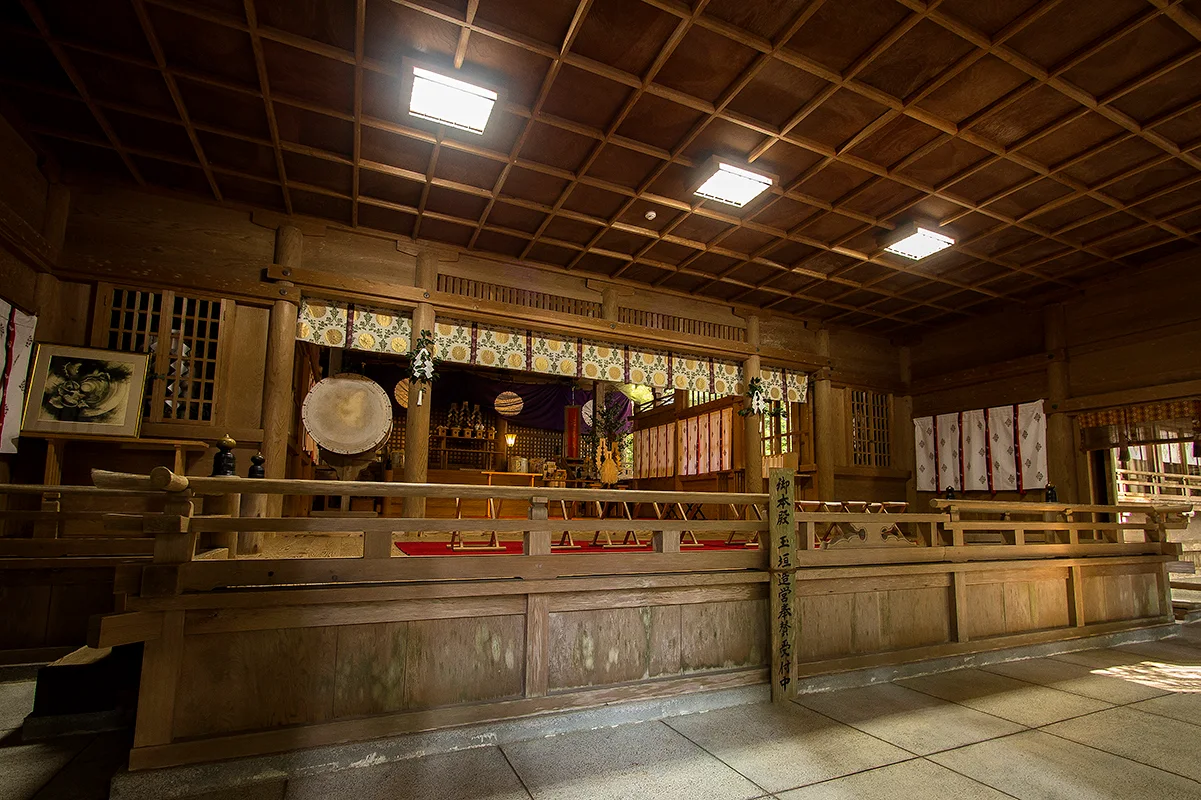I might as well introduce Takachiho shrine (高千穂神社) where night kagura performance takes place. Please visit part one and part two entries if you are interested in the night kagura performance.
 |
| Main Hall at night |
The enshrined deities are Takachiho sumegami (高千穂皇神) and Jussha Daimyojin (十社大明神). Both Takachiho sumegami and Jussha Daimyojin are collective terms of deities.
Takachiho sumegami includes so-called "Himuka Sandai/日向三代 (Three generations of deities settled in Himuka (日向)" and their spouses. That is:
Jussha Daimyojin (十社大明神) are Mikeirinomikoto (三毛入野命) who is a brother of the first Emperor Jimmu (神武天皇), his spouse, Unomehime (鵜目姫) and their offsprings (Mikotaro/御子太郎, Jiro/二郎, Saburo/三郎, Unemi/畝見, Teruno/照野, Ohto/大戸, Reisha/霊社, and Asarabe/浅良部).
 |
| Inside of Main Hall |
According to the local narratives, Mikeirinomikoto exterminated a demon named Kihachi (鬼八) and settled a palace there. On the other hand, according to the shrine's articles, a son of Emperor Jimmu rooted Kihachifushi (demon) out. Later on, the offspring of Emperor Jimmu was enshrined as Jussha Daimyojin.
Alternatively, Mikeirinomikoto rescued his future wife, Unomehime, from the demon Kihachi and they were married, later on, another narrative depicted.
It is widely recognized that the shrine initiated its history when Mikeirinomikoto enshrined Himuka Sandai deities by building Himorogi (sacred altar/神籬). Since then descendants of Mikeirinomikoto's offspring worshipped enshrined deities. Later on Mikeirinomikoto himself and other Jussha Daimyojin deities were also included as enshrined deities. Eventually, during Emperor Suinin (垂仁天皇)'s reign (29 BC- 70 AD), the buildings were made.
The cedar tree named "Couple cedar/夫婦杉" is well known for benefiting a couple (1) happy marriage, (2) family safety and well-being (3) prosperity after making a circle around the tree three times. The nickname came from the fact that two independent-looking cedar trees were branched from the same root.
The cedar tree named "Couple cedar/夫婦杉" is well known for benefiting a couple (1) happy marriage, (2) family safety and well-being (3) prosperity after making a circle around the tree three times. The nickname came from the fact that two independent-looking cedar trees were branched from the same root.





Thank you!
ReplyDeleteAll the best!